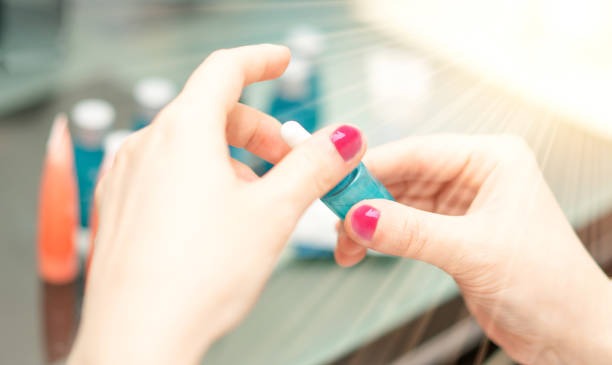The cosmetic industry has witnessed remarkable advancement in nail technology, particularly in formulations that extend wear time while maintaining aesthetic appeal. Long-lasting gel nail polish represents a significant innovation in nail care, utilizing photo-initiated polymerization to create durable, chip-resistant finishes. This technology combines oligomers, monomers, and photoinitiators that cure under UV or LED light, forming cross-linked polymer networks that provide superior adhesion and durability compared to traditional lacquers. Understanding the scientific principles behind gel polish application enables both professionals and consumers to achieve salon-quality results that withstand daily wear without compromising nail health or appearance.
Surface Preparation and Dehydration
Proper nail preparation forms the foundation for long-lasting gel polish adhesion. The natural nail plate consists of keratin layers that contain moisture and oils, which can interfere with gel bonding. Begin with thorough cuticle care using a professional cuticle pusher, ensuring complete removal of dead tissue without damaging the nail matrix. File nails to desired shape using a 180-grit file, moving in one direction to prevent micro-tears that could compromise polish integrity.
Dehydration involves removing natural oils and moisture from the nail surface. Use a lint-free wipe saturated with 99% isopropyl alcohol, which effectively dissolves lipids and evaporates quickly without leaving residue. Some professionals prefer nail dehydrators containing methacrylic acid, which temporarily etches the nail surface to improve mechanical adhesion. The nail plate should appear completely matte after dehydration, indicating optimal preparation for base coat application.
Base Coat Chemistry and Application
Modern gel base coats contain specialized adhesion promoters that create chemical bonds with keratin proteins. These formulations typically include HEMA (hydroxyethyl methacrylate) or similar compounds that penetrate nail plate layers, creating molecular anchoring points. Apply base coat in thin, even layers, avoiding the cuticle area to prevent lifting. The curing process requires specific light wavelengths—UV lamps emit 365nm light, while LED systems operate at 405nm, both triggering photoinitiator activation.
Proper curing involves maintaining consistent distance between the nail and light source, typically 4-6 inches for optimal energy delivery. Under-curing results in incomplete polymerization, leading to soft, tacky surfaces prone to chipping. Over-curing can cause brittleness and heat damage. Most professional LED systems cure base coats in 30-60 seconds, while UV systems require 2-3 minutes for complete polymerization.
Color Application Techniques
Gel polish viscosity varies significantly between brands and formulations, affecting application technique and final appearance. Pigment-dense colors require thinner application to prevent uneven curing and maintain flexibility. Apply color in two thin coats rather than one thick layer, ensuring complete coverage while maintaining translucency for light penetration during curing.
Professional application involves specific brush techniques that minimize streaking and ensure even color distribution. Load the brush with appropriate amounts of polish—too little creates streaky coverage, while excess polish causes flooding and cuticle contact. Maintain consistent pressure throughout application, using smooth, overlapping strokes from cuticle to free edge. Cap the free edge with each coat to prevent chipping at the nail tip, where stress concentrations typically occur.
Advanced Sealing and Maintenance
Top coat selection significantly impacts wear duration and appearance retention. Modern formulations include UV stabilizers that prevent color fading and yellowing, while flexible polymers accommodate nail movement without cracking. Apply top coat using similar techniques as color application, ensuring complete coverage including the free edge cap.
Post-application care involves avoiding water contact for 24-48 hours to allow complete cure development. The oxygen inhibition layer present after curing requires removal with alcohol-saturated wipes to eliminate tackiness and improve gloss. Regular maintenance includes cuticle oil application to maintain nail flexibility and prevent lifting at the proximal nail fold, where mechanical stress often initiates chip formation.



